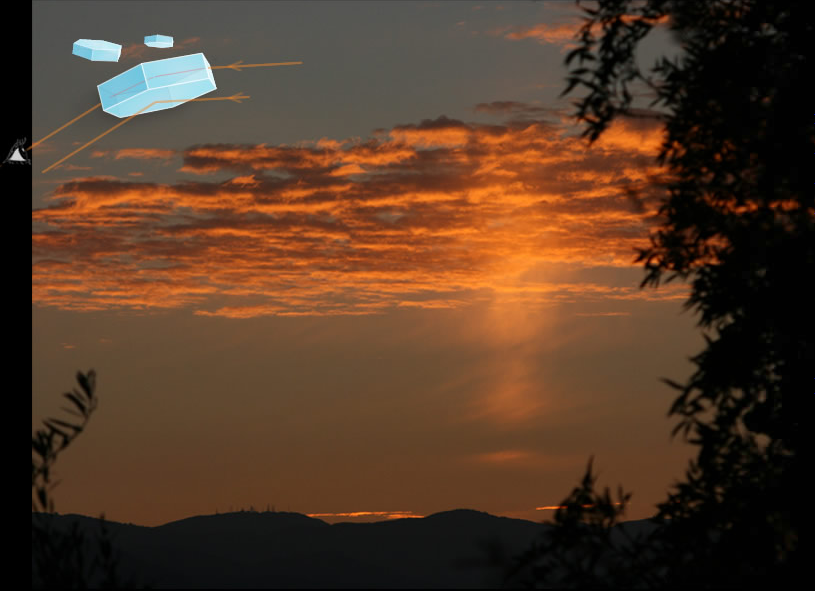Desert Pillar
Desert Pillar: A Spectacular Atmospheric Phenomenon
When it comes to atmospheric optics, one of the most captivating and visually stunning phenomena is the desert pillar. As the sun sets below the horizon, temperatures at ground level in desert regions can remain surprisingly high, even reaching a scorching 90F. However, at higher altitudes where cirrus and altocumulus clouds reside, temperatures are consistently low enough to allow for the formation of ice crystals.
The formation of desert pillars is primarily attributed to plate crystals. These ice crystals, suspended in the atmosphere at high altitudes, interact with sunlight to create a mesmerizing optical effect. As the sun's rays hit the top and bottom faces of these plate crystals, they reflect the light and produce a radiant pillar extending vertically into the sky.
Unlike many other atmospheric phenomena, such as halos, desert pillars do not require aerodynamically aligned crystals. In fact, they thrive on the opposite principle. The more the ice crystals wobble in the air, the taller and more prominent the pillar becomes. This wobbling motion adds a dynamic element to the spectacle, making it even more visually striking.
While plate crystals are the primary contributors to desert pillars, it's interesting to note that horizontal column crystals can also produce these awe-inspiring optical phenomena. This paradoxical phenomenon highlights the complexity and diversity of atmospheric optics, where different crystal formations can lead to similar visual outcomes.
Desert pillars have been observed in various locations around the world, but they are particularly prevalent in arid regions such as deserts. The dry air and clear skies characteristic of these environments provide ideal conditions for the formation and visibility of these stunning phenomena.
The appearance of desert pillars can vary depending on atmospheric conditions and the angle at which sunlight interacts with the ice crystals. In some instances, desert pillars may appear as slender beams of light reaching towards the heavens. In others, they may take on a more diffuse and ethereal appearance, creating an otherworldly atmosphere.
Photographers and enthusiasts often seek out desert pillars to capture their beauty and share them with the world. The contrast between the arid desert landscape and the radiant pillar piercing through the sky creates a captivating image that evokes a sense of wonder and awe.
In conclusion, desert pillars are a remarkable atmospheric optical phenomenon that occurs when plate crystals or horizontal column crystals interact with sunlight at high altitudes. These ice crystals reflect sunlight, creating vertical pillars that extend into the sky. The wobbling motion of the crystals adds to the height and prominence of the pillar, making it a visually stunning spectacle. While desert pillars are commonly observed in arid regions, their occurrence is not limited to deserts alone. The complexity and diversity of atmospheric optics continue to fascinate scientists and enthusiasts alike, reminding us of the incredible beauty and intricacies of our natural world.

Sun Pillar, Southern California, June 14, '08 by John Garrett (site). ©John Garrett, shown with permission.
Although the sun had set, the temperature at ground level was 90F. However, at the level of cirrus and altocumulus clouds temperatures are always low enough for ice crystals to form.
Plate crystals made this pillar. High altitude sunlight reflected off their top and bottom faces.
Most halos need aerodynamically well aligned crystals but pillars are the opposite. The more the crystals wobble, the taller is the pillar.
Plates are not the only crystal to form pillars, paradoxically, horizontal column crystals can also produce them.
Note: this article has been automatically converted from the old site and may not appear as intended. You can find the original article here.
Reference Atmospheric Optics
If you use any of the definitions, information, or data presented on Atmospheric Optics, please copy the link or reference below to properly credit us as the reference source. Thank you!
-
<a href="https://atoptics.co.uk/blog/desert-pillar/">Desert Pillar</a>
-
"Desert Pillar". Atmospheric Optics. Accessed on November 26, 2024. https://atoptics.co.uk/blog/desert-pillar/.
-
"Desert Pillar". Atmospheric Optics, https://atoptics.co.uk/blog/desert-pillar/. Accessed 26 November, 2024
-
Desert Pillar. Atmospheric Optics. Retrieved from https://atoptics.co.uk/blog/desert-pillar/.